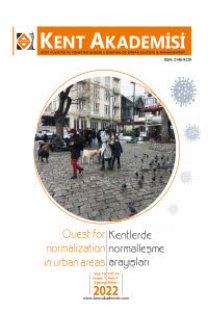İnşaat Maliyet Endeksi Tahmininde Holt-Winters Üstel Düzeltme Parametrelerinin PSO ve İleri Walk-Forward Cross-Validation ile Optimizasyonu
İnşaat Maliyet Endeksi, Holt-Winters, Walk Forward Cross-Validation, Particle Swarm Optimization, Parametre Optimizasyonu
Optimizing Holt-Winters Exponential Smoothing Parameters for Construction Cost Index Forecasting with PSO and Walk-Forward Cross-Validation
Construction Cost Index Holt-Winters, Forward Cross-Validation, Particle Swarm Optimization, Parameter Optimization, Metaheuristics,
___
- Ashuri, B., & Lu, J. (2010). Time Series Analysis of ENR Construction Cost Index. Journal of Construction Engineering and Management-asce, 136, 1227-1237.
- Ashuri, B., & Shahandashti, S.M. (2012). Quantifying the Relationship between Construction Cost Index (CCI) and Macroeconomic Factors in the United States.
- Aydınlı, S. (2022). Time series analysis of building construction cost index in Türkiye. Journal of Construction Engineering, Management & Innovation (Online), 5(4).
- Berrar, D. (2019). Cross-Validation. Encyclopedia of Bioinformatics and Computational Biology, 1(April), 542-545.
- Choi, C., Ryu, K.R., & Shahandashti, M. (2021). Predicting City-Level Construction Cost Index Using Linear Forecasting Models. Journal of Construction Engineering and Management-asce, 147, 04020158.
- Fachrurrazi (2016). Study of Unit Price for Competitive Bidding Based on CCI (Construction Cost Index) for Building. International journal of engineering research and technology, 5.
- Jiang, F., Awaitey, J., & Xie, H. (2022). Analysis of construction cost and investment planning using time series data. Sustainability, 14(3), 1703.
- Joukar, A., & Nahmens, I. (2016). Volatility Forecast of Construction Cost Index Using General Autoregressive Conditional Heteroskedastic Method. Journal of Construction Engineering and Management-asce, 142, 04015051.
- Liu, H., Kwigizile, V., & Huang, W. (2021). Holistic Framework for Highway Construction Cost Index Development Based on Inconsistent Pay Items. Journal of Construction Engineering and Management.
- Marini, F., & Walczak, B. (2015). Particle swarm optimization. A tutorial. Chemometrics and Intelligent Laboratory Systems, 149, 153-165.
- Shahandashti, S. M., & Ashuri, B. (2013). Forecasting engineering news-record construction cost index using multivariate time series models. Journal of Construction Engineering and Management, 139(9), 1237-1243.
- Tey, K.H., Lim, S.Y., Yusof, A.M., & Chai, C.S. (2015). The implementation of construction cost index (CCI) in Malaysia.
- Velumani, P., & Nampoothiri, N.V. (2021). Volatility forecast of CIDC Construction Cost Index using smoothing techniques and machine learning. International Review of Applied Sciences and Engineering.
- Wang, J., & Ashuri, B. (2017). Predicting ENR Construction Cost Index Using Machine-Learning Algorithms. International Journal of Construction Education and Research, 13, 47 - 63.
- Zhan, T., He, Y., & Xiao, F. (2021). Construction Cost Index Forecasting: A Multi-feature Fusion Approach. arXiv preprint arXiv:2108.10155.
- ISSN: 2146-9229
- Yayın Aralığı: Yılda 4 Sayı
- Başlangıç: 2008
- Yayıncı: Karadeniz Yazarlar ve Şairler Derneği
Akıllı Şehirleri Çok Kriterli Karar Verme ile Değerlendirme ve Sıralama
Mert ÜNAL, Gülfem IŞIKLAR ALPTEKİN
Konut Projelerinde İdeal İş Süresinin Tahmini İçin Bir Hesaplama Yöntemi Önerisi
Özlem TÜZ EBESEK, Şafak EBESEK
Belediyelerin İnternet Sitelerinde Faaliyet Raporları: Burdur İli Belediyeleri
